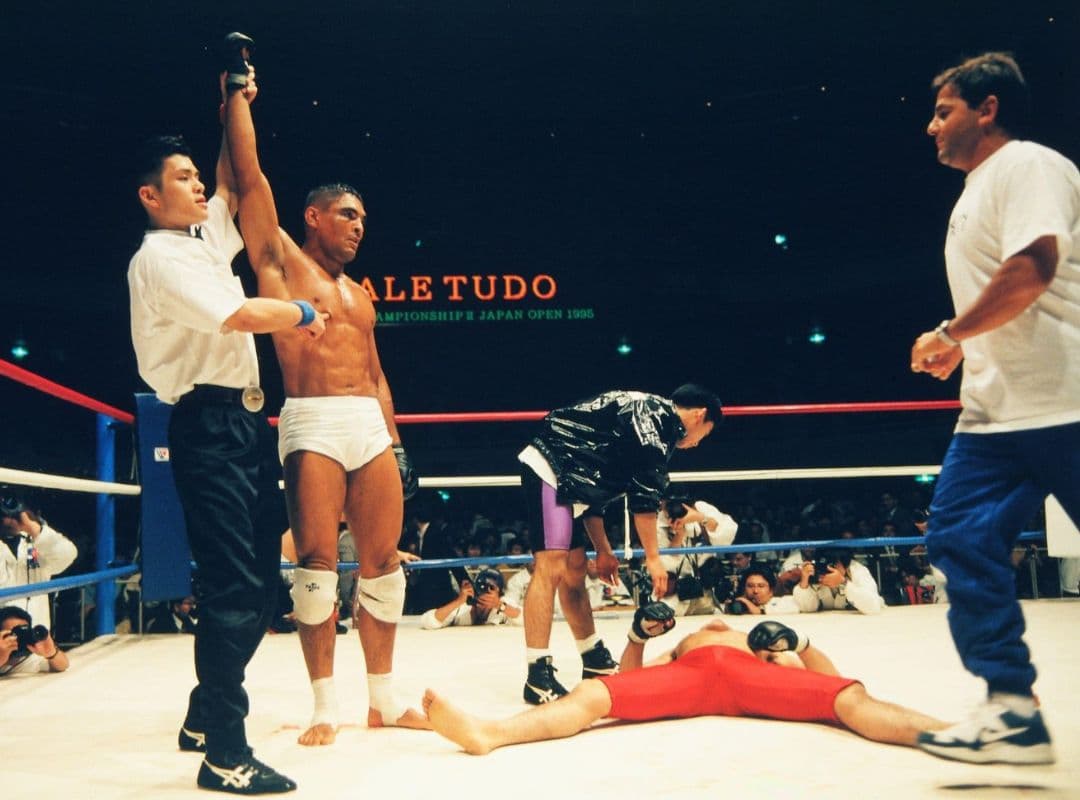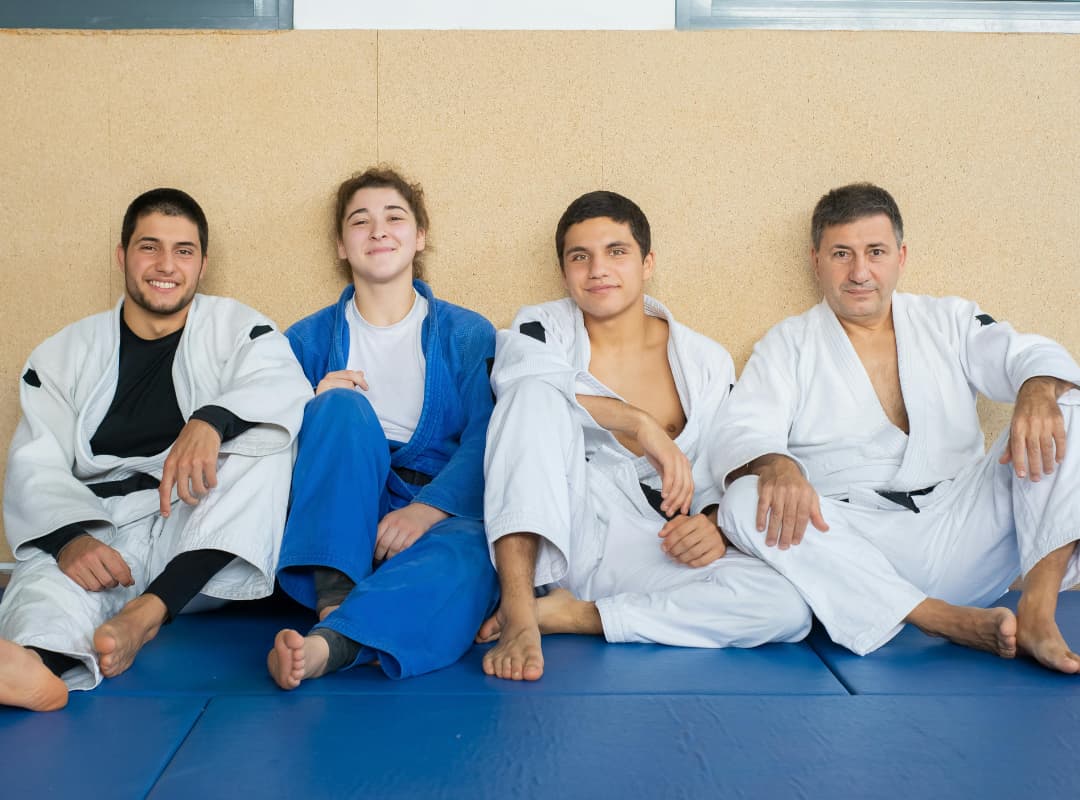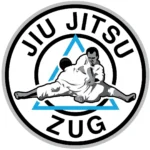
Beginnings of the Gracie Jiu Jitsu fighter
Rickson Gracie was born on November 21, 1958 in Río de Janeiro and grew up in the capital’s favelas. As one of nine sons of Gracie Jiu Jitsu grandmaster Hélio Gracie, Rickson spent a lot of time on the mat during his childhood. He often watched his father and uncles in Gracie challenges and practiced the martial art with his brothers from a young age. At the age of 6, he took part in his first Jiu Jitsu competition. At that time, the martial art was not yet widely known and his father’s mission was to convince the world of the effectiveness of Gracie Jiu Jitsu for self-defense. Hélio recognized Rickson’s talent early on and chose him as the strongest representative of the next generation. Hélio is said to have often referred to him as “Urso” (bear) in training due to his strength and outstanding fighting style. At the age of 15, Rickson began teaching jiu jitsu at his father Gracie’s academy. By the age of 18, Gracie had already received his black belt in BJJ and was considered the strongest member of the Gracie family.
Rickson considered himself exclusively a Gracie Jiu Jitsu fighter and did not train in any other disciplines for upcoming Vale Tudo fights, the forerunner of today’s MMA, in which there were hardly any rules. He faced the best fighters from various martial arts to prove the superiority of Gracie Jiu Jitsu. Rickson fought in the middleweight up to 84 kg and the open weight class. His favorite techniques included the armbar and mata leao (rear naked choke).
Career as a Gracie Jiu Jitsu fighter
In 1980, there was a legendary fight between Gracie and Rei Zulu, who was particularly feared at the time. Everyone else refused to take on the 100 kilogram opponent. Gracie, however, accepted the challenge in a Vale Tudo contest and defeated Zulu in the third round by Mata Leao in front of a large audience. Rickson was the first fighter to defeat the legendary and previously unbeaten Zulu with a record of 140 fights won. A few years later, the wrestler demanded a rematch, which Rickson also won early by choke. The event took place in front of 20,000 spectators at the Ginásio do Maracanãzinho in Río de Janeiro. After the two victories against Zulu, Rickson had made a name for himself in Brazil and was already considered one of the best fighters in the country at the age of 25. Rickson was also Jiu Jitsu world champion in the middleweight and open weight classes for almost two decades.
The Luta Livre fighting style was one of the best and most popular fighting systems in Brazil at the time. As a representative of his family, Rickson accepted every challenge and so it came to a fight on the beach of Río against the Luta Livre fighter Hugo Duarte, who insulted the Gracie family. Rickson won the fight. However, Duarte later claimed that Gracie defeated him with a lucky punch. A second encounter ensued, which Rickson also won, once again defending the reputation of Gracie Jiu Jitsu. Street fights and quickly organized Gracie challenges were the norm at the time, and Rickson is said to have contested and won over 400 such challenges.
In 1989, Gracie emigrated to the United States and helped his older brother Rorion found the first Gracie Jiu Jitsu Academy in Torrance, California. He taught at the academy himself and, together with his brothers, popularized the martial art after the founding of the Ultimate Fighting Championship in America.
Vale Tudo Japan and the Yoji Anjo story
In 1994, Rickson received a personal invitation to a Vale Tudo tournament in Japan, a promising opportunity to present the Gracie family’s martial arts on an international stage. The “Vale Tudo Japan 1994” tournament featured eight of the best fighters from different disciplines on one evening. The eventual winner Rickson would go on to win three dominant victories and prove his status as a top class fighter on the international stage. The following year, Gracie competed again at “Vale Tudo Japan”, winning his fights for the second time with early victories by submission holds and extending his impeccable record. The sold-out stadium filled with Japanese spectators was very enthusiastic about his fighting style and gave him a “samurai spirit”, a great honor in Japan.
After Rickson’s spectacular victories in Japan, some Japanese fighters felt that their martial arts traditions had been dishonored. Gracie was then publicly challenged to a fight by the Japanese professional wrestler Nobuhika Takada. Rickson ignored the challenge. A short time later, one of Takada’s students, Yoji Anjo, traveled to America. He personally challenged Rickson to a fight at his academy in a Japanese event to restore his master’s honor. However, Gracie insisted on a Vale Tudo fight on the spot, behind closed doors and without an audience or press. Anjo reluctantly accepted the terms and the fight took place in Gracie’s academy. Despite clear superiority, Rickson decided to assert his dominance in the fight and beat up Anjo after taking him down and securing the mount position. The Gracie family still own the footage of the fight to this day, without ever having released it. Photos of Yoji Anjo’s bloody and swollen face were later released by photographers at the scene and the recorded fight was shown in a press conference to refute Anjo’s public accusations of being attacked by several of Gracie’s students.
Pride Japan and end of career
In 1997, Rickson finally returned to Japan to fight Takada in the Tokyo Dome at the first Pride event in front of almost 50,000 spectators. The fight ended quickly in favor of Gracie by armbar in the first round. The following year, Gracie gave Takada another chance to redeem himself in a rematch at Pride 4. Despite a good performance, Rickson again defeated him by armbar in the first round.
In 2000, Gracie first faced Japan’s best fighter in Masakatsu Funaki. More than 30 million people are said to have watched the fight live on television. Rickson won in the first round by Mata Leao. After Japanese fighter Kazushi Sakuraba, also known as “Gracie Hunter”, defeated Royler at Pride 8 and three other Gracies, he challenged Rickson. However, the fight never materialized. Gracie ended his career early, as his eldest son Rockson passed away in 2001 at the age of just 19. After the death of his first child, Rickson took an extended break from Brazilian Jiu Jitsu. After a few years, he continued his own training and teaching of BJJ with a self-defense aspect, focusing on his son Kron to carry on the family tradition. Kron would go on to become European Champion and Vice World Champion in Brazilian Jiu Jitsu and in 2013, win the world’s prestigious grappling event ADCC dominant.
Legacy of a martial arts legend
Rickson Gracie is considered a legend and one of the best Gracie Jiu Jitsu fighters of all time, who ended his active career undefeated. Through numerous Vale Tudo fights in the 80s and 90s in Brazil and Japan, Rickson made a significant contribution to the spread of the Gracie fighting style. In addition to Brazilian Jiu Jitsu, Rickson has made a name for himself as an undefeated fighter in MMA with a fighting record of 11 victories. In 2014, Rickson was inducted into the Legends of MMA Hall of Fame. During the peak of his career, an impressive documentary entitled “Choke” about the “Vale Tudo Japan 1994” tournament covered his preparation and the competition. There is also a book about Rickson Gracie’s life entitled “Breathe: A Life in Flow”.
As a close combat instructor, Rickson has taught his techniques to numerous tactical units worldwide. These include units of the Brazilian BOPE (special police unit), US Army Delta Force, US Navy Seals, LASD Special Enforcement Bureau and LAPD Metro Division.
Rickson currently holds a 9th degree red belt and continues to teach BJJ with a self-defense aspect. He also has a black belt in judo. In addition to martial arts, Rickson has practiced yoga and special breathing exercises intensively throughout his career, which help to develop mental and physical strength.




